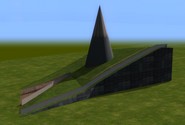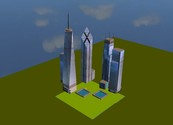Support:Layout Convention: Difference between revisions
| (25 intermediate revisions by 6 users not shown) | |||
| Line 5: | Line 5: | ||
The first thing on the page is always describing what the user will know when he has finished reading the current page. | The first thing on the page is always describing what the user will know when he has finished reading the current page. | ||
Updated template example: | |||
{{learned|file=Terrain-Q3-2015.jpg|what Terrain is|how Terrains relate to the Tygron engine|about the different Terrain types in the Tygron engine|how to add Terrain to your project|how to change Terrain in your project}} | |||
==Main Structure (Definition)== | ==Main Structure (Definition)== | ||
| Line 21: | Line 26: | ||
The ''"How can the user change it"'' relates to how changes can be made to the current topic in the engine. | The ''"How can the user change it"'' relates to how changes can be made to the current topic in the engine. | ||
===Adding / Removing=== | ===Adding / Removing=== | ||
{{Editor location|stakeholders}} | |||
This reference can be created by using the "Editor location" template: | |||
{{Template description|Editor location|Item}} | |||
Each topic refers at the top of the subject to the editor interface in the above convention. This way users can easily find the location where changes can be made. | Each topic refers at the top of the subject to the editor interface in the above convention. This way users can easily find the location where changes can be made. | ||
''"Adding / Removing"'' explains how users can add and remove elements to the editor. The topic ends with images, so the user gets a graphical representation of the steps to be taken to reproduce the action. | ''"Adding / Removing"'' explains how users can add and remove elements to the editor. The topic ends with images, so the user gets a graphical representation of the steps to be taken to reproduce the action. | ||
| Line 27: | Line 37: | ||
See the "Adding Constructions" example below. | See the "Adding Constructions" example below. | ||
====Adding constructions==== | ====Adding constructions (Example)==== | ||
{{Editor steps|title=add Constructions|Right click on the list of constructions|Select 'Add' from the context menu. This adds new construction to the construction list, named "0_Building".|The new construction is not present in the 3D World yet, since no selection has been added to the Construction yet.|For details on adding / changing a selection from a construction see [[#How to edit constructions in a game|see below.]]}} | |||
These steps can be created by using the "Editor steps" template: | |||
{{Template description|Editor steps|title=title|Step|Step|Step...}} | |||
<gallery mode="nolines"> | <gallery mode="nolines"> | ||
File: | File:construction5.jpg|A landmark | ||
File: | File:construction6.jpg|Another landmark | ||
</gallery> | </gallery> | ||
===Changing=== | ===Changing=== | ||
{{Editor location|project names}} | |||
''"Changing"'' explains the detailed properties of this element and how users change this properties of elements. It describes: | ''"Changing"'' explains the detailed properties of this element and how users change this properties of elements. It describes: | ||
====What is this property==== | ====What is this property==== | ||
| Line 53: | Line 65: | ||
For example: | For example: | ||
: '' Main article: [[Budget (Indicator)]].'' | : '' Main article: [[Budget (Indicator)]].'' | ||
==Special characters== | |||
For consistency and compatibility, please be sure to always use html-encoded characters when using special characters. | |||
For example, rather than directly placing a right arrow (→), use the html sequence &rarr;. Instead of an ampersand (&), use the html sequence &amp; or &#38;. | |||
A comprehensive overview can be found externally: | |||
http://www.degraeve.com/reference/specialcharacters.php | |||
==Page headers== | |||
: When editing a live page, please post a note at the top of the page: | |||
{{being updated}} | |||
: When a page is unavoidably technical, please post a note at the top of the page/section: | |||
{{technical}} | |||
{{technical|section}} | |||
: When a page is no longer relevant for current technology, but needs to remain available for legacy reasons, please post a note at the top of the page: | |||
{{legacy}} | |||
{{legacy|current=Support:Layout Convention}} | |||
==Convention for: Choosing, Selecting, Pressing, Clicking == | |||
Borrowed from: http://iconlogic.blogs.com/weblog/2015/04/elearning-and-techcomm-click-select-choose-or-press.html | |||
===Choose (making a choice)=== | |||
You "choose" something from a menu, because you are "choosing" from a list of "choices," and once you "choose" the one you want, the chosen command is immediately executed. | |||
choose File > Close | |||
===Select (selecting)=== | |||
You "select" something that, once you select it, stays selected. You select a cell in Excel. You select part of the text in a document. You select an option from a list and the option stays selected-as in a drop-down list or a list-box. You select a radio button, and you select a checkbox. And they stay selected. Until you "deselect" them. | |||
select the Portrait Orientation radio button | |||
select the Kerning checkbox | |||
from the Font drop-down list, select Verdana | |||
select the first paragraph in your document | |||
deselect the Enable Live Preview checkbox | |||
===Press (Hardware)=== | |||
You "press" a key on a keyboard or a real button on an actual piece of hardware. (The word "press" definitely cannot be used to describe what you do to an on-screen button, because it may create ambiguity: Does "Press Home" mean on the screen or on the keyboard?) | |||
press the Enter key | |||
press the F6 key | |||
press the Power button (on the microwave) | |||
===Click (On-screen)=== | |||
And finally, you "click" an on-screen button, an icon, or a tool. | |||
click the OK button | |||
click the Bold tool | |||
click the Wifi icon | |||
[[Template:Preview]] | |||
Latest revision as of 11:34, 12 June 2020
This pages describes the way the pages are layout to ensure all pages are consistent. It means as an example how to layout the different pages on the wiki.
After reading this page
- You've learned how to layout pages on the Tygron Wiki
The first thing on the page is always describing what the user will know when he has finished reading the current page.
Updated template example:
Main Structure (Definition)
The main Structure of most pages is divided into 3 parts.
What is it?
The "What is it?" gives the user an explanation of the definition of the term.
- '''Indicators are named after Key Performance Indicators, by which organizations evaluate their success. Key Performance Indicators serve as a means for identifying potential improvements, and as a metric for the degree to which those improvements have been successful.''''
How does it relate to the Tygron Engine
The "How does it relate to the Tygron Engine" gives the user an explanation of the relation between the term and the way it is implemented in the Tygron Engine.
How can the user change it
The "How can the user change it" relates to how changes can be made to the current topic in the engine.
Adding / Removing
This reference can be created by using the "Editor location" template:
{{Editor location|Item}}
Each topic refers at the top of the subject to the editor interface in the above convention. This way users can easily find the location where changes can be made.
"Adding / Removing" explains how users can add and remove elements to the editor. The topic ends with images, so the user gets a graphical representation of the steps to be taken to reproduce the action.
See the "Adding Constructions" example below.
Adding constructions (Example)
- Right click on the list of constructions
- Select 'Add' from the context menu. This adds new construction to the construction list, named "0_Building".
- The new construction is not present in the 3D World yet, since no selection has been added to the Construction yet.
- For details on adding / changing a selection from a construction see see below.
These steps can be created by using the "Editor steps" template:
{{Editor steps|title=title|Step|Step|Step...}}
Changing
"Changing" explains the detailed properties of this element and how users change this properties of elements. It describes:
What is this property
"What is this property"describes what this property is.
Where is this property used
"Where is this property used"describes on which place this information is presented to the players.
How can it be changed
"How can it be changed"describes the technical details on how this information can be changed by the user.
Main Article
The Main article convention is used to reference to a topic which has a more detailed description.
For example:
- Main article: Budget (Indicator).
Special characters
For consistency and compatibility, please be sure to always use html-encoded characters when using special characters.
For example, rather than directly placing a right arrow (→), use the html sequence →. Instead of an ampersand (&), use the html sequence & or &.
A comprehensive overview can be found externally: http://www.degraeve.com/reference/specialcharacters.php
Page headers
- When editing a live page, please post a note at the top of the page:
- When a page is unavoidably technical, please post a note at the top of the page/section:
- When a page is no longer relevant for current technology, but needs to remain available for legacy reasons, please post a note at the top of the page:
For the current version, please see Support:Layout Convention.
Convention for: Choosing, Selecting, Pressing, Clicking
Borrowed from: http://iconlogic.blogs.com/weblog/2015/04/elearning-and-techcomm-click-select-choose-or-press.html
Choose (making a choice)
You "choose" something from a menu, because you are "choosing" from a list of "choices," and once you "choose" the one you want, the chosen command is immediately executed.
choose File > Close
Select (selecting)
You "select" something that, once you select it, stays selected. You select a cell in Excel. You select part of the text in a document. You select an option from a list and the option stays selected-as in a drop-down list or a list-box. You select a radio button, and you select a checkbox. And they stay selected. Until you "deselect" them.
select the Portrait Orientation radio button select the Kerning checkbox from the Font drop-down list, select Verdana select the first paragraph in your document deselect the Enable Live Preview checkbox
Press (Hardware)
You "press" a key on a keyboard or a real button on an actual piece of hardware. (The word "press" definitely cannot be used to describe what you do to an on-screen button, because it may create ambiguity: Does "Press Home" mean on the screen or on the keyboard?)
press the Enter key press the F6 key press the Power button (on the microwave)
Click (On-screen)
And finally, you "click" an on-screen button, an icon, or a tool.
click the OK button click the Bold tool click the Wifi icon

